
Main content:
- 1.Summarize the US new energy vehicle market in 2021
- 1.Sales volume and sub-brand analysis
- 2.Market structure: Pure electric is the mainstream, 2022 is the first year of electric pickup trucks
- 3.Policy enforcement: The new energy vehicle market is expected to accelerate
- 4.What's holding back the electric car market in U.S.?
- 2.The latest data of the US new energy vehicle market in 2022
1.Summarize the US new energy vehicle market in 2021
As the world's third largest market for the growth of new energy vehicles, the United States is still at a low penetration rate despite its early start. The penetration rate in 2021 is only 4.34%, compared with 15.5% in China and 21% in Europe.
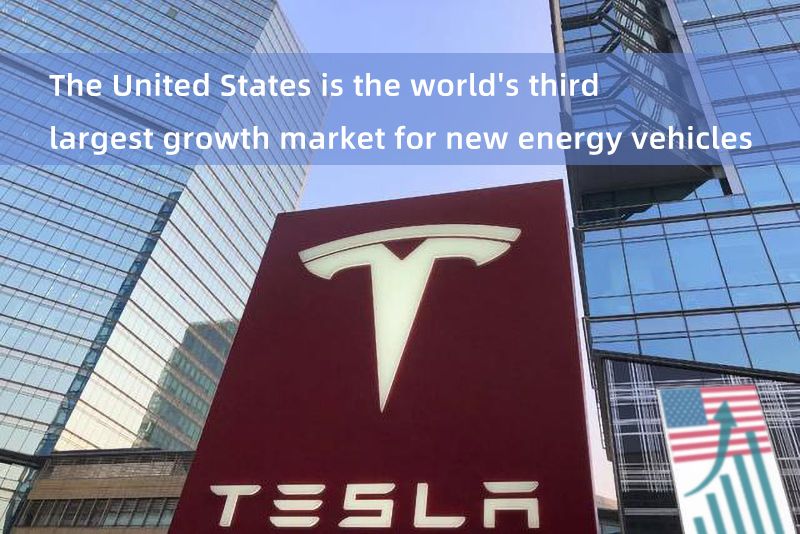
NADA(National Automobile Dealers Association) believes that this is mainly related to the weak government drive, weak infrastructure, less vehicle supply and scattered urban clusters in the American market. 2022 is a big year for the new energy vehicle market in the United States. Combined with U.S. government and state policy subsidies, the United States government is currently vigorously promoting the $1.75 trillion "Build Back Better" Act (hereinafter referred to as Bill 3B). The bill increases subsidies for each car from the current maximum of $7,500 to a maximum of $12,500. It also removes a subsidy cap of 200,000 vehicles for automakers, increasing the marginal amount of subsidies for each model. If "BILL 3B" is implemented, Tesla and General Motors will re-enter the list of subsidies, which will further catalyze and detonate the new energy vehicle market in the United States. It is expected that the sales volume of new energy vehicles in the United States in 2022 is expected to double from 2021 to 1.3 million units.
1.1 Sales volume and sub-brand analysis
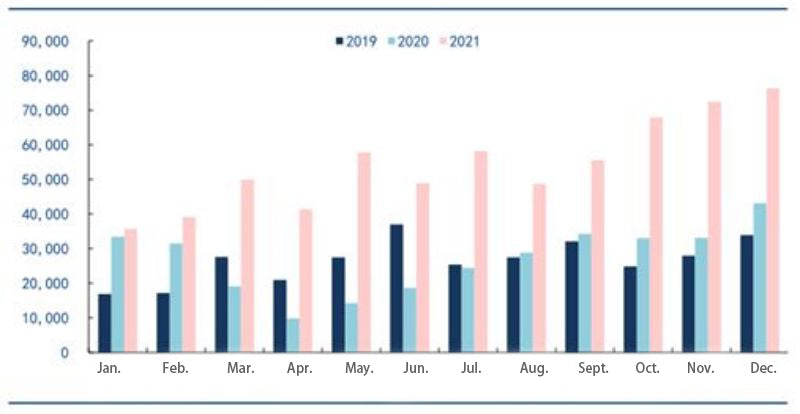
Chart: Sales of new energy vehicles in the US double in 2021
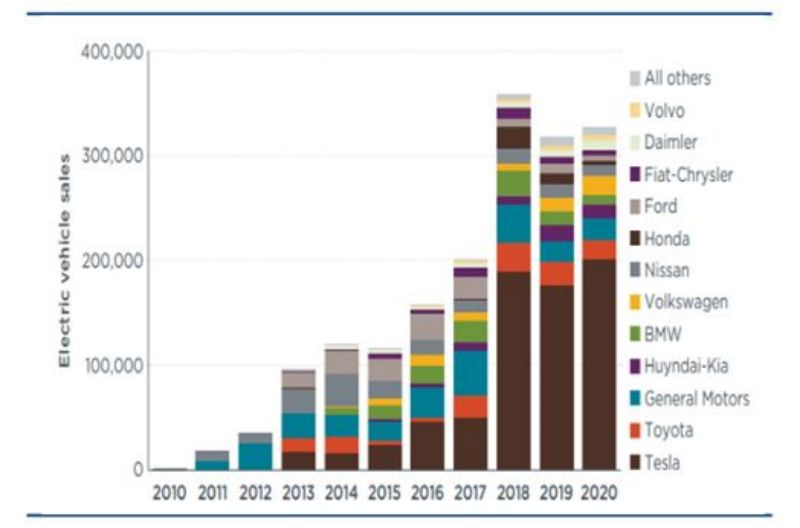
Chart: Sales structure of new energy vehicles in the US from 2010 to 2020
Sales of new energy vehicles in the US reached 652,000 units in 2021, up 101% year on year. Among them, the sales volume of pure tram is 488,000, up 88% year-on-year, accounting for 75% of the sales volume. Plug-in and hybrid sales volume was 164,000, up 154% year on year, accounting for 25% of sales volume. In 2021, 3.31 million new energy vehicles were sold in China, up 183% year on year. Among them, 2.736 million pure trams were sold; Year-on-year growth of 182%, sales accounted for 82.5%; Plug-in and hybrid sales volume was 577,000, up 172% year on year, accounting for 17.5%;
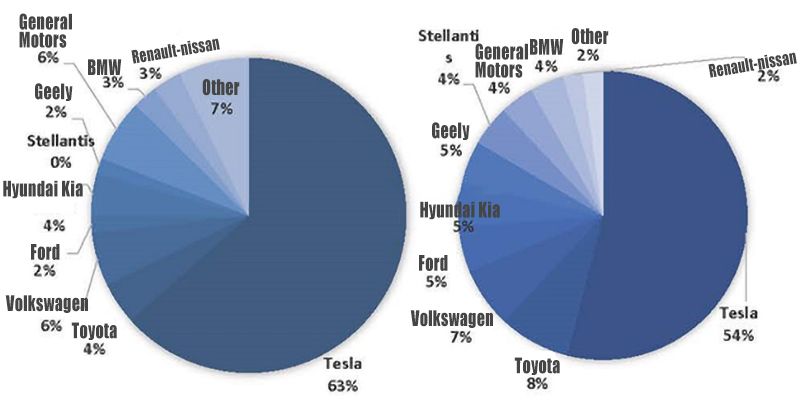
Chart: Sales of new energy vehicles in the US double in 2021
According to the sales structure, Since its launch in 2018, Tesla has occupied nearly 70% of the market share of new energy vehicles in the US with Modle3 and ModleY models, while Toyota, General Motors, Hyundai, Ford and other models jointly occupy the remaining 30% of the market. According to ICCT (International Council for Environmental Transportation) statistics, in 2020, 59 new energy models will be sold in the US market, while China and Europe will supply 300 models and 180 models respectively in the same period. In comparison, the supply side of the US market is short and relatively single in the past.
1.2 Market structure: Pure electric is the mainstream, 2022 is the first year of electric pickup trucks
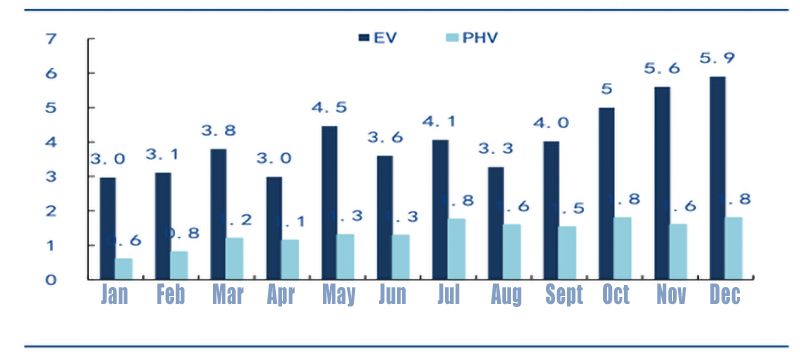
Chart: Sales volume of new energy vehicles in the US by model in 2021 (unit: 10,000 units)
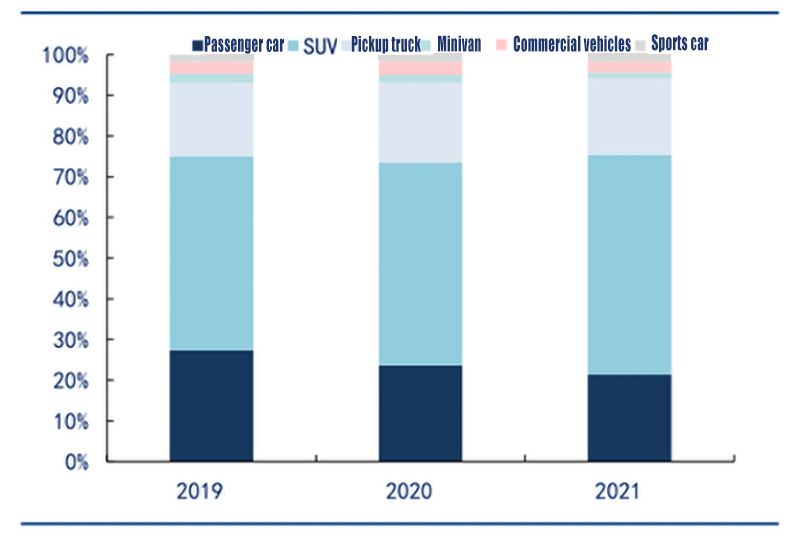
Chart: Basic plates for pickups and SUVs of American heritage
In terms of models, the sales structure of the American market is stable, and the body types are still dominated by pickups and SUVs. Up to now, light trucks (pickup trucks, SUVs) account for about 72.8% of the total electric vehicle, while maintaining steady growth.
1.3 Policy enforcement: The new energy vehicle market is expected to accelerate
The US government has strengthened support for new energy vehicles and related industries, signed an agreement to return to the Paris Agreement, and it is estimated that the penetration rate of new zero-emission vehicles in the US will reach 50% by 2030 and reach carbon neutrality by 2050. On March 31, 2021, the U.S. government proposed to invest $174 trillion to support the development of the electric vehicle market in the United States, mainly for: improving the U.S. government industry chain, sales discounts and tax incentives, the construction of 500,000 charging piles by 2030, and the electrification of school buses, buses and federal fleets across the country. On November 19, 2021, the House of Representatives passed the $1.75 trillion stimulus bill. According to the plan passed by the House of Representatives, it is planned to increase tax credits up to $12,500, of which the subsidy base amount is $4,000. If the battery capacity is more than 40kwh by 2027, 50kwh after 2027 will receive an additional $3,500; If the car company is a union in the United States (excluding non-member companies such as Tesla and Japanese and Korean companies), it will get an additional $4,500. If the parts are 50% American and the battery is made locally, it will get an additional $500.
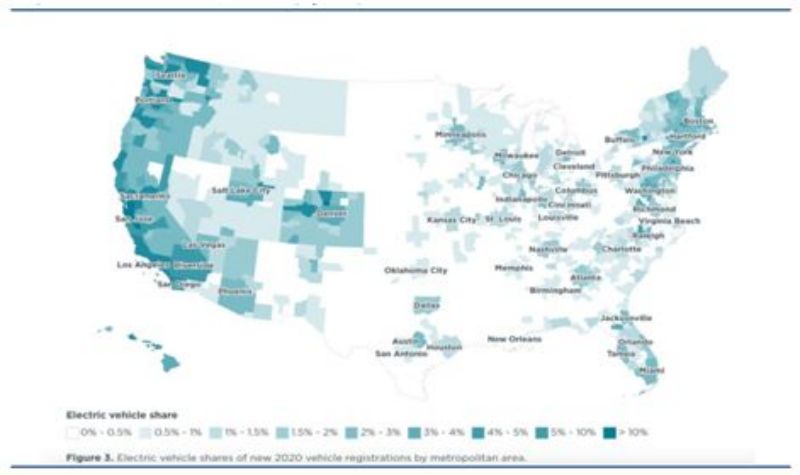
Chart: Current ev penetration rates by state
Currently, "Bill 3B" has passed the House of Representatives, but Democratic Senator Manchiin openly opposed Biden's "Bill 3B", the main points of controversy are the inflation crisis brought by further expansion and concerns about the speed of energy transition too fast will endanger the security of the national grid, etc. Further discussion will be conducted with relevant controversial policies to seek consensus. Tesla and General Motors are expected to be the biggest beneficiaries of bill 3B.

Chart: Calculation of the time of subsidy retreat of major auto companies
1.4 What's holding back the electric car market in U.S.?
Through the comparison of cities and cities within the country, the paper explores what factors lead to the low penetration rate and slow development of electric vehicles in the US market. There are three main reasons:
- Policies vary from state to state: each state has independent legislative power and different incentive policies;
- Different supporting degrees of infrastructure: the lower the car-pile ratio is, the lower the penetration rate of trolley car is;
- Different levels of vehicle type richness: The more diversified the vehicle type, the higher the sales volume of trolley car.
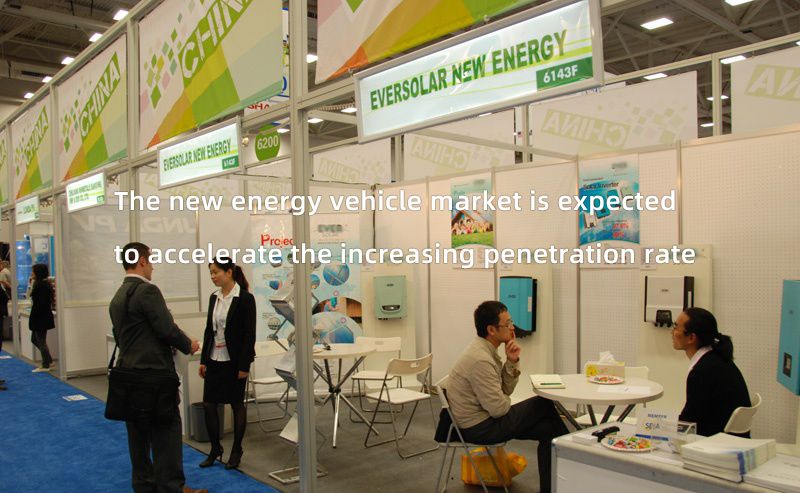
2.The latest data of the US new energy vehicle market in 2022
- A total of 59,554 newenergy vehicles (44,148 BEVs and 15,406 PHEVs) were sold in the U.S. market in February 2022, up 68.9% year on year, and newenergy vehicle penetration rate (LDV) was 5.66%.
- A total of 59,564 HEV units (15,763 vehicles and 43,801 LT units) were sold in the U.S. market in February 2022, an increase of 10.2% year over year. Fuel cell companies sold 241 FCEVs last month (a total of 431 in 2022).
Overall, 112,829 vehicles were sold in the U.S. in 2022, and demand for this segment has increased significantly in the U.S. as oil prices have risen.
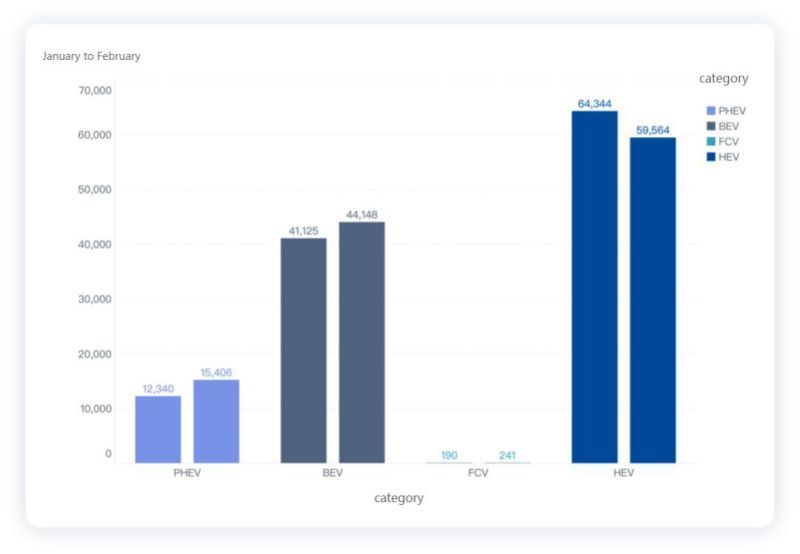
Figure . Sales of major new energy vehicles in the United States
2.1 The situation of the American market
- new energy vehicles
The number of new energy vehicles in the United States reached nearly 60,000 units in February, up about 6,000 from 53,400 units in January. In terms of actual sales volume, Model 3 and Model Y occupy the leading position in the sales volume of new energy vehicles, and the sales volume of these two vehicles is about 25,000 yuan per month.
Tesla Model Y: 18,500 units in January, 21,000 in February.
Tesla Model 3:13,600 in January and 11,000 in February.
Ford Mustang: 2,370 mach-E units in January, 2,001 units in February.
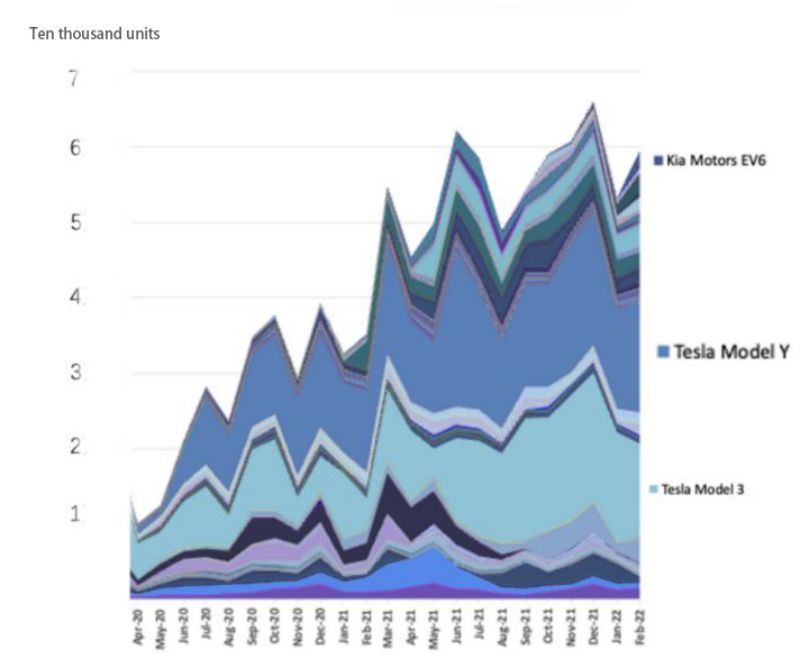
Figure . Overall sales pattern of electric vehicles in the United States
- Hybrid cars
The number of hybrid vehicles in February totaled 59,564 units (15,763 vehicles and 43,801 LT units), up 10.2% year on year, and the pace has slowed. The main problem is that Toyota accounts for 63.7% of all hybrid sales.
- Penetration rate of newenergy vehicles
Among new energy vehicles, the car penetration rate in the United States is the highest, while LT and LDV are slower. After the mass delivery of electric pickup trucks, this segment will have a great improvement.

Figure . Increased penetration rate of new energy vehicles in the United States
At present, the oil price in the United States is also at a high level. This round of sales of new energy vehicles and strong hybrids are climbing, which is also a historical opportunity under specific oil and gas time conditions, and the subsidy policy in the United States has not yet started.
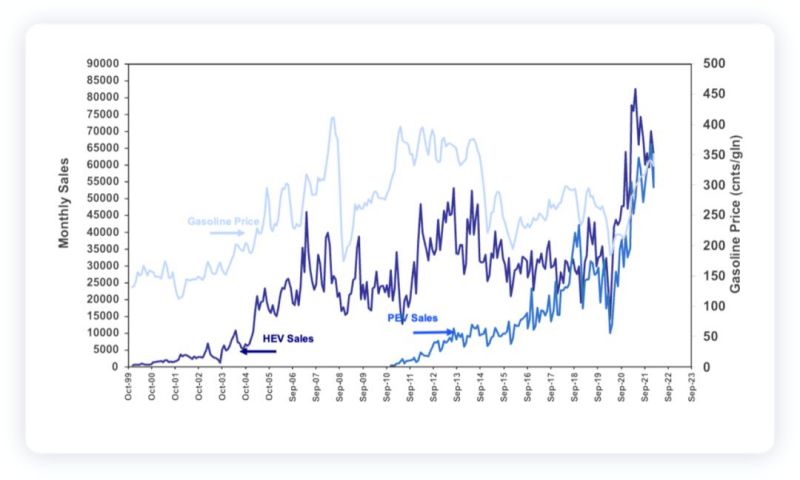
Figure . Relationship between HEV, NEVS and oil prices in the US
2.2 Battery production planning in the United States
In this wave of auto sales in the United States, the contribution of traditional American auto companies is relatively small, with Ford, General Motors, Stellantis, Toyota and Volkswagen have opened battery plants in the United States, this part of the increase is continuous and certain. Much of the current expansion of pure electric is centered around Tesla's Gigafactory.

Table . Battery factories of traditional car companies
With other companies investing in the United States, the future growth curve for battery production capacity in the United States is very steep.
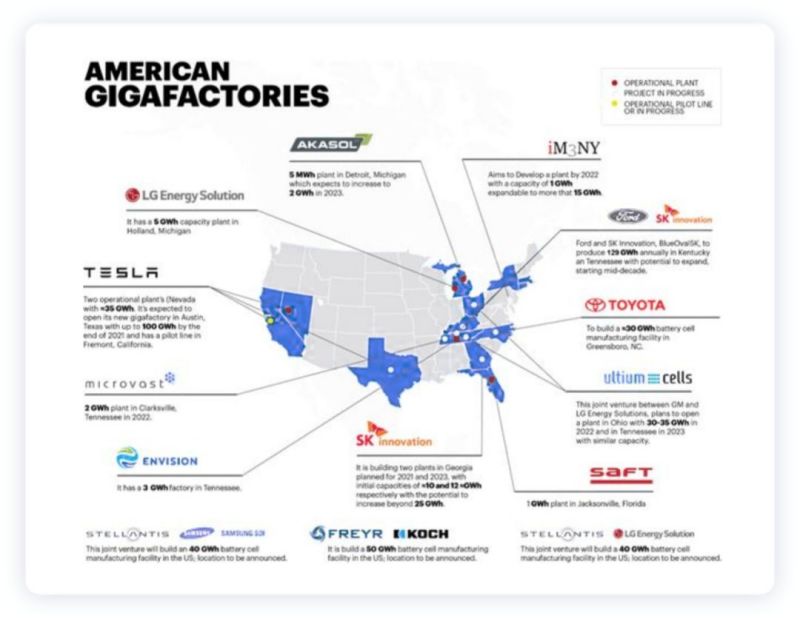
Figure . Plans for a Gigafactory in the United States
Rivian, currently in the US, is also announcing that it will start using LFP batteries, and Lucid also needs a large number of batteries to support the 2022-2023 deliveries of two highly valued US start-ups. In fact, the situation at home and abroad, the real mass delivery of battery enterprises, in fact, not much. Understandably, the United States also lacks a consistent supply of high-quality power batteries.
Summary: Tracking the development of new energy vehicles in the United States and the capacity expansion of power batteries, in fact, is relatively comparable to China. Due to the Trump administration's inaction, the US has actually lost its leading position in the volume of electric vehicles (excluding Tesla).
In the era of smart cars, with the entry of Amazon and Apple, the competition between China and the US in the field of smart cars will be more intense.